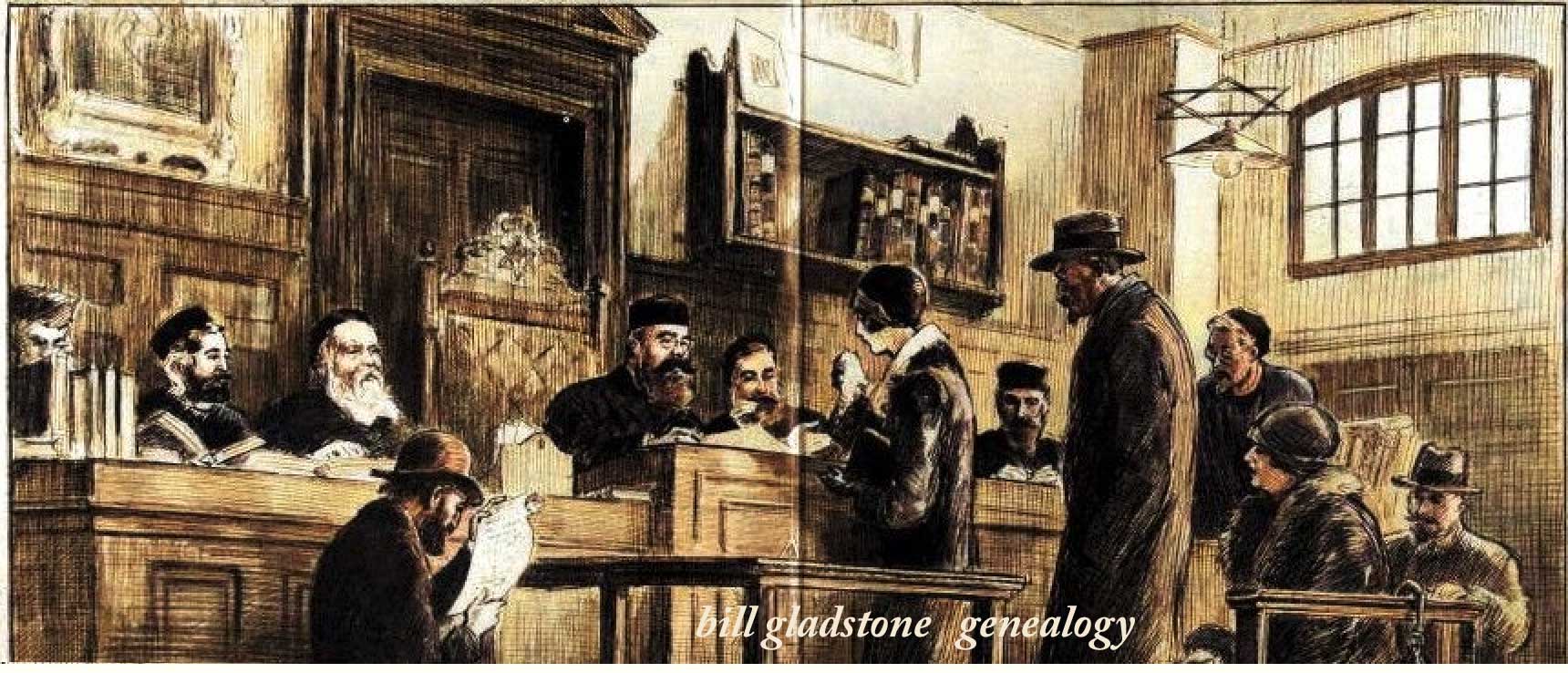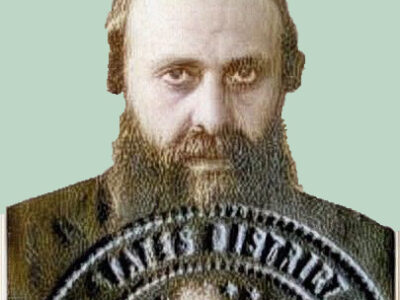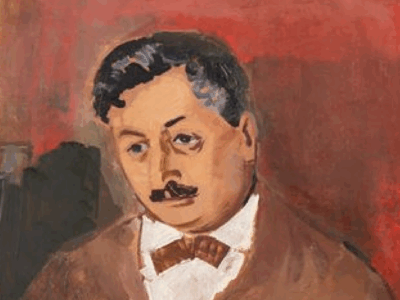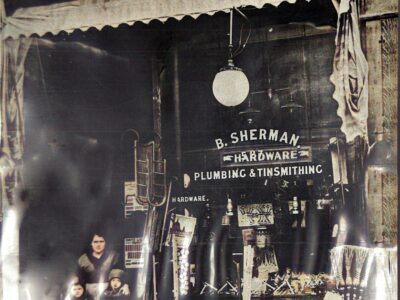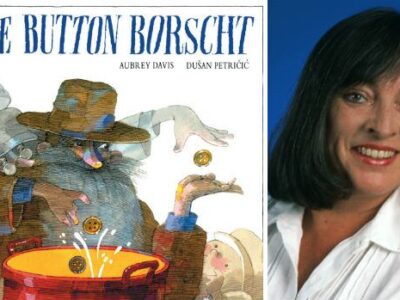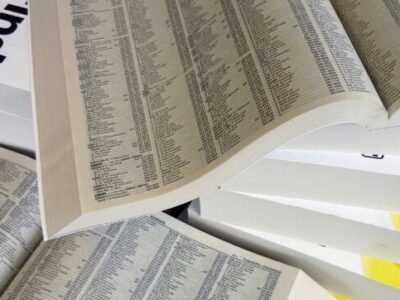from Canadian Jewish News (2015)
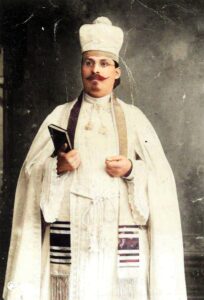 When Cantor Bernard Wladowsky was lured from Chicago to Toronto in March 1912 to begin singing in Goel Tzedec Congregation’s monumental new synagogue on University Avenue, he was 36 years old, in beautiful voice, and of striking appearance in his white clerical robes. As the Toronto Daily Star marveled at the time, Wladowsky had sung for an American President the previous year and now all of the citizens of Toronto could enjoy his magnificent voice.
When Cantor Bernard Wladowsky was lured from Chicago to Toronto in March 1912 to begin singing in Goel Tzedec Congregation’s monumental new synagogue on University Avenue, he was 36 years old, in beautiful voice, and of striking appearance in his white clerical robes. As the Toronto Daily Star marveled at the time, Wladowsky had sung for an American President the previous year and now all of the citizens of Toronto could enjoy his magnificent voice.
As a means of supplementing his income, Wladowsky performed marriage ceremonies and circumcisions, recording the details from 1915 to 1920 in a Yiddish scrawl in a small notebook. Today Wladowsky’s ledger book is a proud possession of the Ontario Jewish Archives Blankenstein Family Heritage Centre.
Wladowsky conducted my grandparents’ marriage in 1917 and recorded the details in his book, including the fact that my great-grandfather paid him $12. A year later he performed the cutting rite on my father for the then-princely sum of $5. To any family historian, these ledger entries are prized items.
The OJA vault on north Bathurst Street, which has been newly outfitted with compact mobile shelving units thanks to a grant from the federal government and a capital gift from the Blankenstein family, houses many such records and collections of special interest to family historians. The OJA also holds circumcision records compiled by Dr. Isadore M. Cass, a well-known mohel of a later generation who performed some 40,000 procedures throughout Canada and the U.S., beginning in 1945.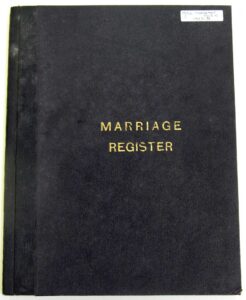
The handwritten marriage ledgers of Rabbi Y. L. Graubart, Toronto’s “Poilisher Rebbe” of the 1920s and 1930s, are particularly noteworthy because they indicate the place of birth, in most cases a Polish town, of almost every bride and groom. Reflecting a later era (1956 to 1970), Rabbi David Monson’s marriage registers are also available, although access may be restricted on this and other files due to privacy regulations.
Steamship ledgers kept by the Rotenberg Steamship Agency in the early 20th century may reveal when an immigrant ancestor’s ship-ticket was purchased, and by whom; the entries were indexed and are now searchable online on the OJA’s website. The OJA also possesses a ledger of the former Anshel Wise Steamship Agency. To determine where one’s immigrant ancestors live once they settled in Toronto, rare copies of the Toronto Jewish City Directories may be consulted, including the years 1925 and 1931, both of which are searchable online.
By conservative estimate, the OJA holds about 60,000 photos, about one-third of which have been digitized. Images include scenes from the Old Country, families newly settled in Toronto, local Mom-and-Pop businesses, restaurants, garment and other factories, and group portraits of organizations ranging from Alpha Omega Dental Fraternity to the Zionist Girls Society. As for sound recordings, the OJA’s collection of more than 400 oral histories may prove a particular boon provided the researcher is lucky enough, as I was, to find a recording or two from a long-gone relative telling his or her immigrant saga.
Newspapers on microfilm and in print may be useful for looking up an obituary or known article about a family member. Available titles include the Yidisher Zhurnal, the Jewish Standard, the Canadian Jewish Review, the Canadian Jewish Chronicle and the Canadian Jewish News. The OJA also holds dozens of published family histories and memoirs, including my own modest opus, One Hundred Years in Canada: the Rubinoff-Naftolin Family Tree, published in 2008.
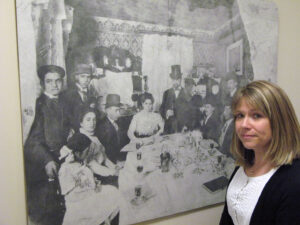
OJA executive director Dara Solomon stands beside a photo enlargement at the Ontario Jewish Archives (2015)
Other bibliographic resources include Canadian Jews in World War II, a wartime listing of Jewish decorations and casualties; Who’s Who in Canadian Jewry, a multi-volume series from the 1960s with hundreds of small biographical capsules and photos; and the Family Who’s Who, a two-volume set published in 1969 and 1974 by the Hebrew University of Jerusalem, offering hundreds of Canadian Jewish family trees.
A diverse assortment of synagogue records and bulletins, material on Jewish life in small towns across Ontario, JIAS and Jewish refugee files, and other items help round out the picture. There is more of interest to family historians in the OJA’s extensive holdings than can be neatly summarized here. Occasionally the diligent researcher digs deep enough into the records to uncover some obscure little treasure that none of the attending archivists has seen before or even knew existed. Research by appointment only; please visit the website or phone 416-635-5391. ♦
* * *
